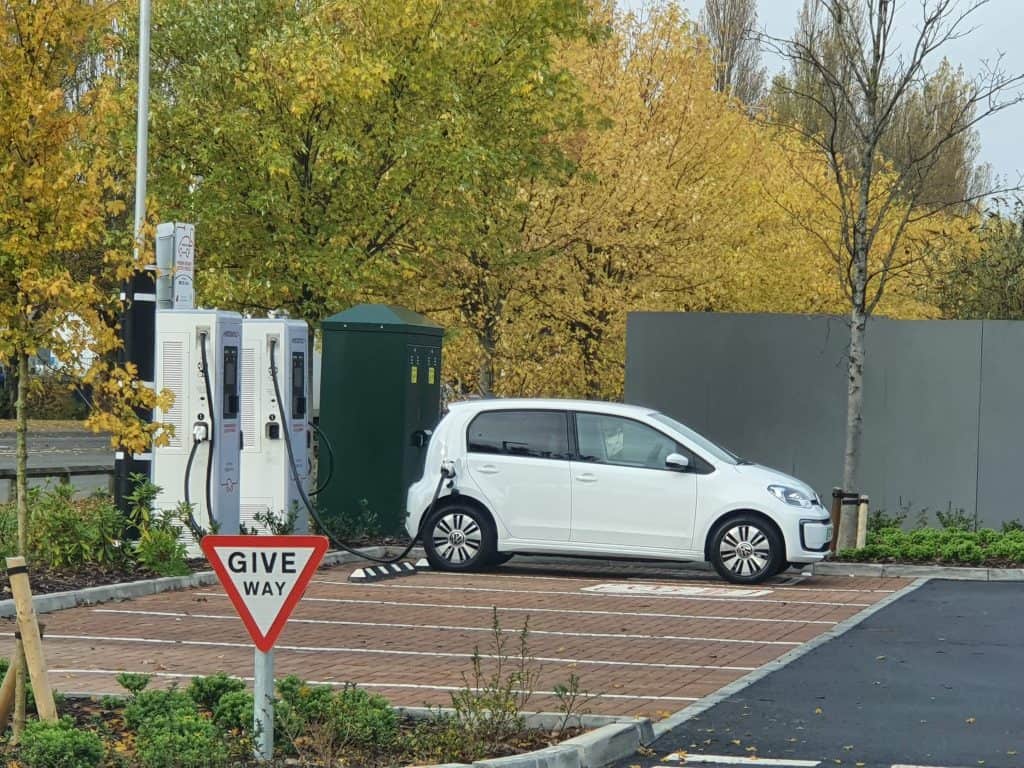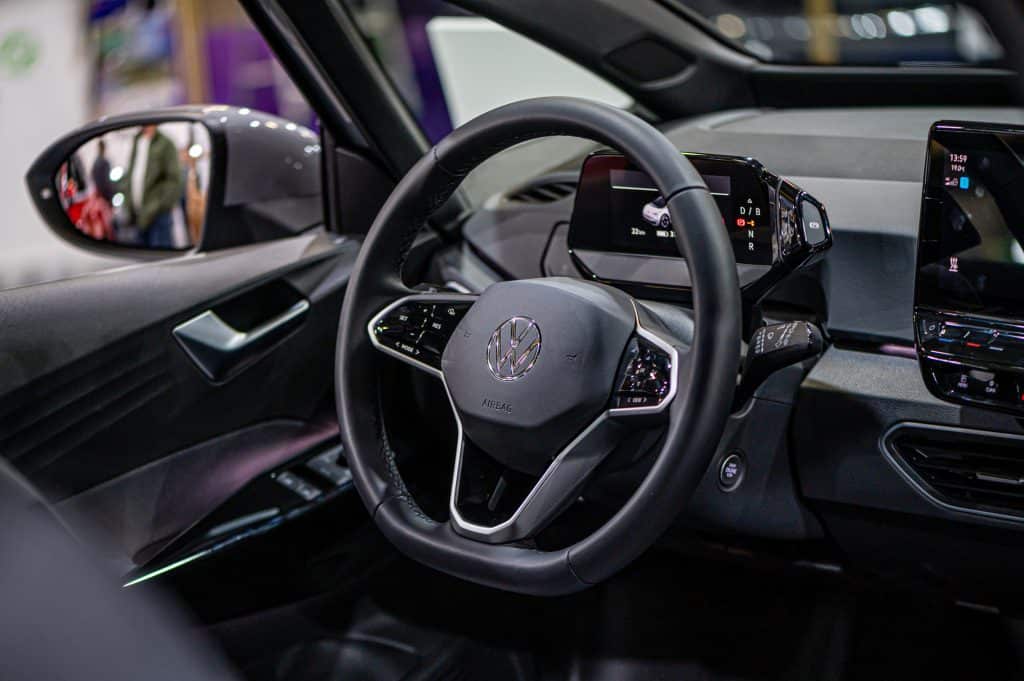Heat pump, or no heat pump? This is the big question circulating around the VW ID.4, the much anticipated electric crossover SUV that stormed onto the scene in the 2021 model year. It brings up to 260 miles of range, and has a starting price sitting comfortably under the $40,000 mark, making it a hot competitor for Tesla’s Model X which costs a lot more and in some people’s opinions lacks the pleasing refinement of the ID.4. Many were also thrilled at the prospect of it being made more efficient than ever with the addition of a heat pump.
What’s the result? Does the ID.4 have a heat pump or not? These are the core questions that we’ll be answering in today’s blog. Let’s get some clarity.
First – Does the ID.4 Have a Heat Pump?
Yes, the Volkswagen ID.4 does have a heat pump. If you’re an American ID.4 owner or a prospective buyer who has checked the dealership website, you might be confused by that answer. That’s because the more accurate answer is “Yes, it does, the Volkswagen ID.4 does have a heat pump, but it depends on which country you live and/or are buying one.”
For instance, the ID.4s being sold in the US do not have a heat pump option, but it’s a standard feature on the Canadian ID.4, and sold as an optional extra on the European ID.4. This obviously raises questions as to why such a difference was necessary, and why has Volkswagen ultimately reached this decision.
A VW spokesperson, Mark Gillies, was quoted on the subject by Motor1.com
“We basically took the decision that we didn’t think [the heat pump] offered that much benefit if you were preconditioning. We also wanted to make this a value, and it was quite a pricey piece. We didn’t see the benefit in terms of range for the price of the car.”
Mark Gillies, VW Spokesperson
What this surprisingly blunt statement seems to say is that VW decided not to put the heat pump as a standard or optional feature on the US version of the ID.4 because it seems that preconditioning — setting the car’s environmental controls in advance so the car’s nice and warm before you get in — renders it useless, and that it’s too expensive compared to any gains it might bring to range.
Mr. Gillies may have been happy with this response, but it seems to raise other important questions. If this is the case, why is it offered on the Canadian ID.4 and as an option on the European ID.4? Furthermore, why has Tesla put one in their Model Y? Why has Hyundai put one in their Kona EV? Why has Kia put one in their Niro EV? All of these are standard features.
Is VW Right? Is the Heat Pump Unnecessary?

Motor1.com did some testing on the ID.4 to see if there was any logic to what the VW spokesperson was saying about the heat pump being mostly unnecessary because of preconditioning.
They tested the car in very cold temperatures of 30-40 degrees and found the interior very comfortable with preconditioning and that there was no reason to doubt the stated EPA estimates on the car’s range in normal conditions.
In their test, the first day was the coldest day with temperatures around 32 degrees (freezing). Their 80-mile test route saw them yield 2.6 miles per kWh of charge, consuming a total of 43 percent of the battery while running the car in Eco mode.
The second day was warmer with temperatures in the 40s, so they set the car to Comfort mode and yielded 2.9 miles per kWh, consuming a total of just 38 percent of the charge. In both cases, preconditioning was used to heat the seats, and the heat set to “HI” and the result was about a 50 mile drop in total range.
Others have pointed out, too, that using standard heating features like the heated seats and heated steering wheel is often a better option than using the electric resistance heater because the wheel and seats are actually more effective at keeping driver and passengers warm while also being less of a drain on the battery than the resistance heater.
The findings of Motor1.com may still not satisfy some drivers who had been hoping the ID.4 would at least give them the option of a heat pump. Even if it costs extra, why deny people the choice, right? If it’s good enough for Europe and Canada, why not America? VW’s answer to Motor1.com doesn’t exactly sound as though they will be bringing the heat pump in as an option or standard in the future, either.
Doesn’t the ID.3 Have a Heat Pump?

It seems we’ll need more information than just that of one spokesperson, so let’s dive a bit deeper into the recent history of Volkswagen EVs and heat pumps. The German automaker did indeed install the heat pump on their ID.3 electric hatchback.
Furthermore, as we have mentioned above, it was installed as a standard feature on the Canadian model and as an option for the European model. This actually wasn’t the positive provision that VW had hoped that it would be.
The problem was in VW’s overestimation as to the real efficiency of their heat pump when it came to range boosting. As it happens, VW’s heat pump isn’t very effective when temperatures reach -25 degrees Centigrade — or -13 degrees Fahrenheit), and VW overestimated its efficiency by as much as 20 percent in these very low temperatures. This is despite the fact that the company had previously promised that this wouldn’t happen.
The breaking of an advertised promise has cost the company, too. They’ve had to pay out €285 per customer, of which there were 56,230. That added up to a bill of €16 million, which equates to $19.5 million or thereabouts. These sums pale in comparison to the billions VW had to pay over the Dieselgate scandal, but still it’s not nice to lose close to $20 million on a feature that you hoped would help boost sales and reassure people living in the coldest parts of the world that this was the EV for them.
Instead, they’ve ended up with a heat pump that’s not good enough and thus had to resort to great range losses just to keep the car warm enough.
Interestingly, it’s not only VW that has been having this problem with heat pumps. Nissan Leaf has long used a heat pump and touted its positive impacts, but once again it failed to pass muster when it was subjected to the very genuine cold temperatures of Norway.
It was tested alongside a number of competing EVs, and the Leaf’s performance in Norway’s frigid temperatures was apparently disappointing, with far more battery life being consumed than was first estimated. The testers even pointed to an inefficient heat pump as a possible cause for this.
Will the ID.4 Still be Comfortable Without the Pump?

As we have mentioned above, prospective buyers of the ID.4 will be glad to know that VW has installed many other ways to keep the car warm and comfortable, such as the preconditioning settings, heated seats and steering wheel, as well as the resistance heater.
The heated seats and steering wheel make contact with the body directly and are therefore more efficient in warming us up than the resistance heater would be.
Therefore, it seems that whether or not you get the heat pump in your VW ID.4, you’ve nothing really to fear in terms of discomfort. The heat pump may even prove to be a hindrance if you live in one of the northern and midwestern states with genuinely cold winters.
Therefore, as we understand more about the situation, VW’s decision not to introduce the pump to the US market starts to become clearer. Perhaps if and when VW’s heat pump technology improves, they’ll make it a more standard feature.
The principle of the heat pump as an energy-saving heating solution is solid and in theory it works very well. The technology itself does work, but there is still a struggle to make it work in the harshest cold, which many countries do experience.
Norway is a good example, as the country with the widest adoption and coverage of EV ownership, it’s in their interest to maximize range, but it has to be done with viable technology. It’s no good to them if the heat pump hinders the range!
7 comments
I’m from Missouri and 30-40 degrees wouldn’t be classified as “very cold.” My Nissan Leaf without a heat pump really takes a hit when I turn on the heater, which is often needed in winter to keep the windshield from fogging. I’m considering an ID.4, but the lack of a heat pump might be a deal breaker. The AWD versions of the Hyundai Ionic 5 and Kia EV6 come standard with head pumps.
Thanks for the input George. (And fair point, 30-40 °f isn’t too cold by many people’s standards – I just dislike the cold, I guess!). The ID.4 is a sweet car, but I agree that the lack of a heat pump is frustrating.
Great comment George. I live in the northeast and was looking forward to buying the more affordable AWD ID.4, but without a heat pump I’m no longer interested in it. Hopefully, the Toyota BZ4X AWD will hit that sweet spot between affordability and winter range with its’ standard heat pump.
Heat pumps generally don’t work well below around 40 degrees. Not in cars nor in homes. They’re extracting heat from the cold air. If its too cold, the coils freeze up. Regular heating strip do consume large amounts of energy, but there’s not much to get around that other than trying to recapture heat from the motors, which often isn’t really that much.
All good points (and great to know), thanks for the comment David.
The article is helpful to understanding what is going on with the ID.4 heatpump. But is also confusing. Generally, heatpumps return twice the efficiency of resistive heat. Heat pump efficiency and effectiveness will diminish as temperatures drop.
Apparently, heat pumps are on Candian models, seems to me the slightly milder temps of Massachusetts could benefit from the heat pump as well. Preconditioning is extra energy consumption that should be managed efficiently by the systems in the car. Heated seats and steering are great, efficient and effective until they aren’t enough. At that point people will revert to ICE and bask in the “wasted” energy we all want to eliminate.
Hi Paul, a fair comment – and thanks for the insightful views. I do agree that this is a problem area for EVs, especially in much colder climates.